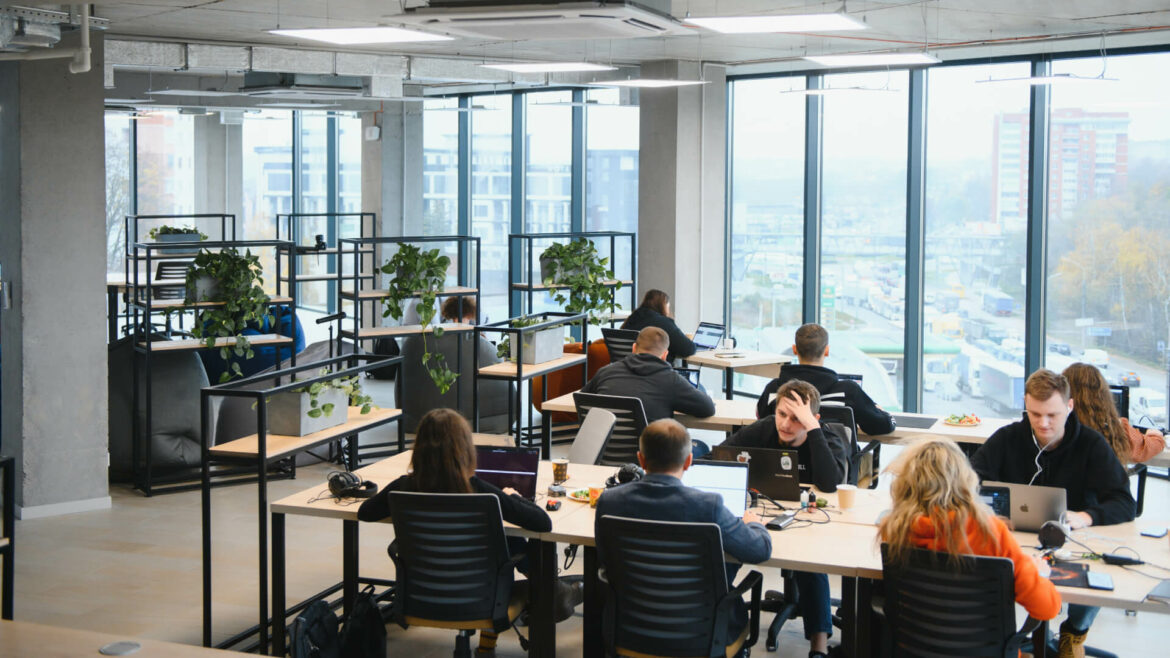The physical workspace’s layout has a big impact on employees’ well-being, output, and overall company performance. Workplace performance is greatly enhanced by office space design in today’s cutthroat business climate. This article explores the relationship between workplace productivity and office design, proposing creative ideas, assessing the psychological impacts, and offering helpful implementation suggestions. It also covers the fundamental characteristics of successful office design.
The idea that an employee’s efficiency and production are influenced by their physical surroundings is not new. But in the digital age, as work dynamics and employee expectations have changed, its significance has grown.
Beyond appearance, strategic office design includes establishing a workplace that supports efficiency, attention, and collaboration. Businesses may dramatically affect how employees interact with their environment and each other by carefully designing the layout, ergonomics, and ambiance, which will increase productivity and satisfaction.
Table of Contents
- Important components of a well-designed office
- Creative solutions for office design
- The effects of office layout on psychology
- Putting new office designs into practice
Important components of a well-designed office
Natural lighting
In addition to improving mood and productivity, optimizing natural light in office architecture lowers headache and eye strain incidence. For this reason, adding lots of natural light to the workstation can have a number of benefits, such as improved employee satisfaction, higher output, and a cozier atmosphere.
The ergonomics
Workspaces with ergonomic design lessen physical strain and pain, which can lower productivity. This includes workstations that are the right height, chairs that can be adjusted, and monitor stands that raise or lower to the user’s eye level.
Spaces: Open vs. closed
The question of whether open or closed office environments are better depends on how much focus and how much collaboration is required. Open areas encourage teamwork and communication, but they can also attract distractions. On the other hand, closed areas can segregate team members while providing seclusion and quiet. A hybrid strategy, which offers spaces for cooperation without compromising personal space for concentrated work, is frequently the answer.
Calm areas
When workers need to focus or conduct private phone calls, they can retreat from the hustle and bustle of the open workplace to designated quiet zones or soundproofed rooms. Modern workplace designs must include these areas since they recognize the diversity of job duties.

Creative solutions for office design
Innovative workplace designs frequently feature adaptable workstations that may accommodate various tasks and methods of operation. For example, modular furniture, movable dividers, and adjustable lighting support a variety of jobs, from solo work to group gatherings. Communal tables and lounge areas are examples of collaborative environments that promote informal contacts and brainstorming sessions, which in turn develop a dynamic and creative work atmosphere.
The effects of office layout on psychology
Stress levels and staff morale can be strongly impacted by an office’s layout and design. An attractive workplace gives the impression that workers’ health and happiness are top priorities, which can improve morale and increase job satisfaction. On the other hand, a small, dimly lit, or noisy workstation can make you feel stressed out and make it harder to work well. Thus, there is a clear and significant correlation between office design and employee satisfaction, which affects retention rates and draws in talent.
Putting new office designs into practice
It’s critical for companies thinking about redesigning to weigh the costs and possible efficiency gains. Some useful advice is as follows:
Start small
Minor changes, like improving lighting or introducing plants, can have a significant impact.
Ask for employee feedback
The likelihood of a good conclusion is increased greatly when employee feedback is incorporated into the design process. Businesses may design work environments that inspire employees to perform at their best by matching the workspace to the real demands and preferences of its users.
Give flexibility first priority
Future-proof work environments are those that can easily adapt to changes in employee work patterns and organizational needs. This strategy ensures the workspace’s continued relevance and usability while also meeting the present needs.
Pay attention to high-quality investments
Although choosing ergonomic furniture and equipment may mean a larger upfront expense, the advantages it offers in terms of increasing output and promoting worker wellbeing greatly exceed the disadvantages. These investments lower health-related problems and increase productivity over time, which results in significant cost savings.
Conclusion
It is impossible to exaggerate the influence office design has on productivity. The physical workspace that employees occupy is crucial when it comes to organizations trying to be innovative and productive. Businesses may build environments that not only boost productivity but also nurture employee well-being and pleasure by taking into account the essential components of effective office design, putting creative solutions into practice, and recognizing the psychological implications.
Businesses are urged to make careful investments in their physical spaces as the office environment becomes an increasingly important tool for attracting and retaining talent in an increasingly competitive corporate world.

Carlo Borja is the Content Marketing Manager of Time Doctor, a workforce analytics software for distributed teams. He is a remote work advocate, a father and a coffee junkie.


